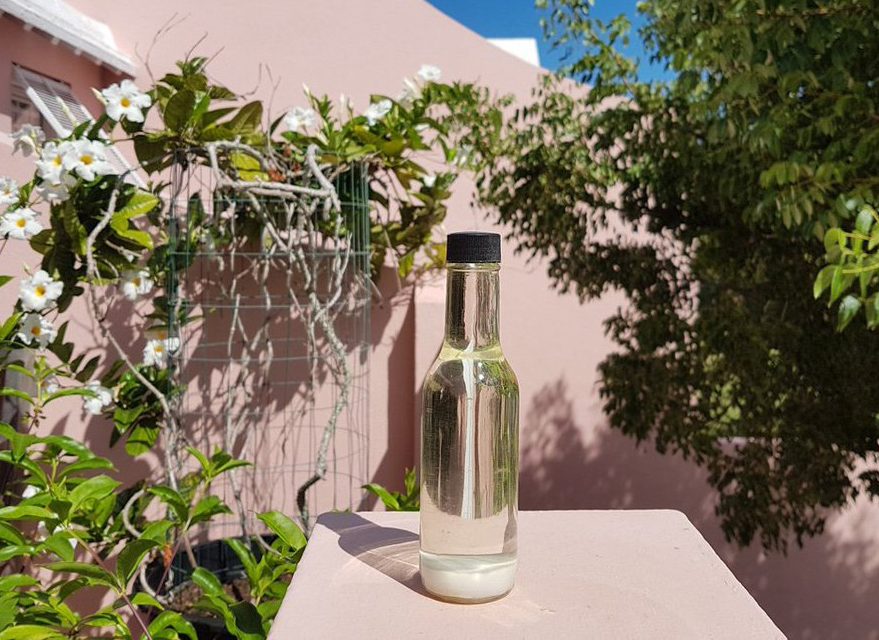by Tim Smith
Long gone are the days when shark oil was the most reliable method of gathering information about storms heading towards Bermuda.
But the fact we’ve made huge strides in weather-forecasting technology doesn’t mean we should belittle the wonders of one of the island’s oldest traditions.
Leading meteorologist Mark Guishard – who grew up in St David’s where shark oil barometers could be seen hanging from household porches for many years – led a research project into their usefulness in his former role as a scientist at the Bermuda Institute of Ocean Sciences.
He discovered that, while they cannot provide enough information on their own to reliably forecast an approaching storm, they can still play a part in understanding current weather conditions.
“A shark oil barometer might be more accurately called a shark oil thermometer,” said Dr Guishard, who is now the director of the Bermuda Weather Service.
“One of our high-level conclusions was that people who use shark oil barometers typically have a sense of the background weather already.
“A person going out to fish, they have a good sense of their environment already. They know what science to look out for, the changing weather patterns.
“The reaction of the shark oil is a means of tying in another piece of information.”
Shark oil is traditionally extracted from shark livers and filtered through cheesecloth before being sealed in bottles.
In fair weather, the oil remains a clear golden colour, similar to cooking oil. However, as a storm approaches, it turns cloudy or milky white and spins at the bottom of the bottle.
One common theory is that the oil inside a live shark acts as an alert for the animal to swim towards deeper water when a storm is approaching. The oil continues to behave in that manner even after extracted from the shark.
Various twists on the tradition have included that the oil must be taken during a full moon, or specifically from a puppy shark.
In their experiment in 2015, Dr Guishard and BIOS intern Shane Antonition took shark oil prepared in the traditional way by an old-time Bermudian fisherman and tested how it behaved in varying atmospheric conditions.
“The student determined that there’s no real reaction to pressure on its own. It reacts to changes of temperature,” Dr Guishard said.
Experienced practitioners of shark oil would also be watching out for other signs of approaching inclement weather, such as cloud patterns.
Dr Guishard explained: “There’s an art to reading shark oil. And context.
“I’m not adept at reading shark oil. I don’t use shark oil. I don’t have the experience to use the shark oil in the same way as a practitioner would. I like to think my reliance on science provides more rigorous analysis.
“Experienced practitioners of reading shark oil will have a better handle on it than people like me.”
Shark oil’s reputation as a forecasting tool suffered a serious blow when it failed to give an advanced warning of Hurricane Emily which devastated Bermuda 34 years ago.
Dr Guishard recalled: “Hurricane Emily in 1987 took a sharp turn towards Bermuda and intensified into a hurricane overnight.
“It was not well enough forecast to get warnings out in sufficient time. We went to bed the night before and woke up first thing in the morning to learn there’s a hurricane going to be on us in the next few hours and that we need to batten down the hatches. That’s what happened.
“It was a good example of a storm that the shark oil did not catch.
“So even for those that know how to read it, it’s not infallible.”
During the four centuries since Bermuda became permanently settled after the Sea Venture was wrecked in a hurricane in 1609, Bermudians have developed many more methods of forecasting serious storms.
The silk spider, nicknamed the hurricane spider, is said to spin its web closer to the ground in trees and shrubs when a storm is on the way, while birds similarly roost lower to the ground.
Before the Bermuda Cedar blight of the 1940s, the scent of cedar would be carried through the air so that Bermudians could “smell the storm” as it approached.
Other signs in nature hinting at an approaching storm include the “South Shore roars”, dogs sniffing the air, sand appearing to float on the water and breakers appearing to boil.
Unsurprisingly, the Bermuda Weather Service takes a more scientific approach.
Its Doppler radar system is equipped with advanced technology that allows meteorologists to monitor weather systems hundreds of miles away and see clearly into the eye of approaching hurricanes.
This gives them access detailed information on hurricane wind fields to help provide accurate short-term warnings for storms, high winds and any other approaching hazards.
Other tools used by the BWS include numerical computer models and satellite imagery, while staff are rigorously trained to spot phenomena and patterns.
“The models have helped us a great deal in recent decades,” Dr Guishard said.

